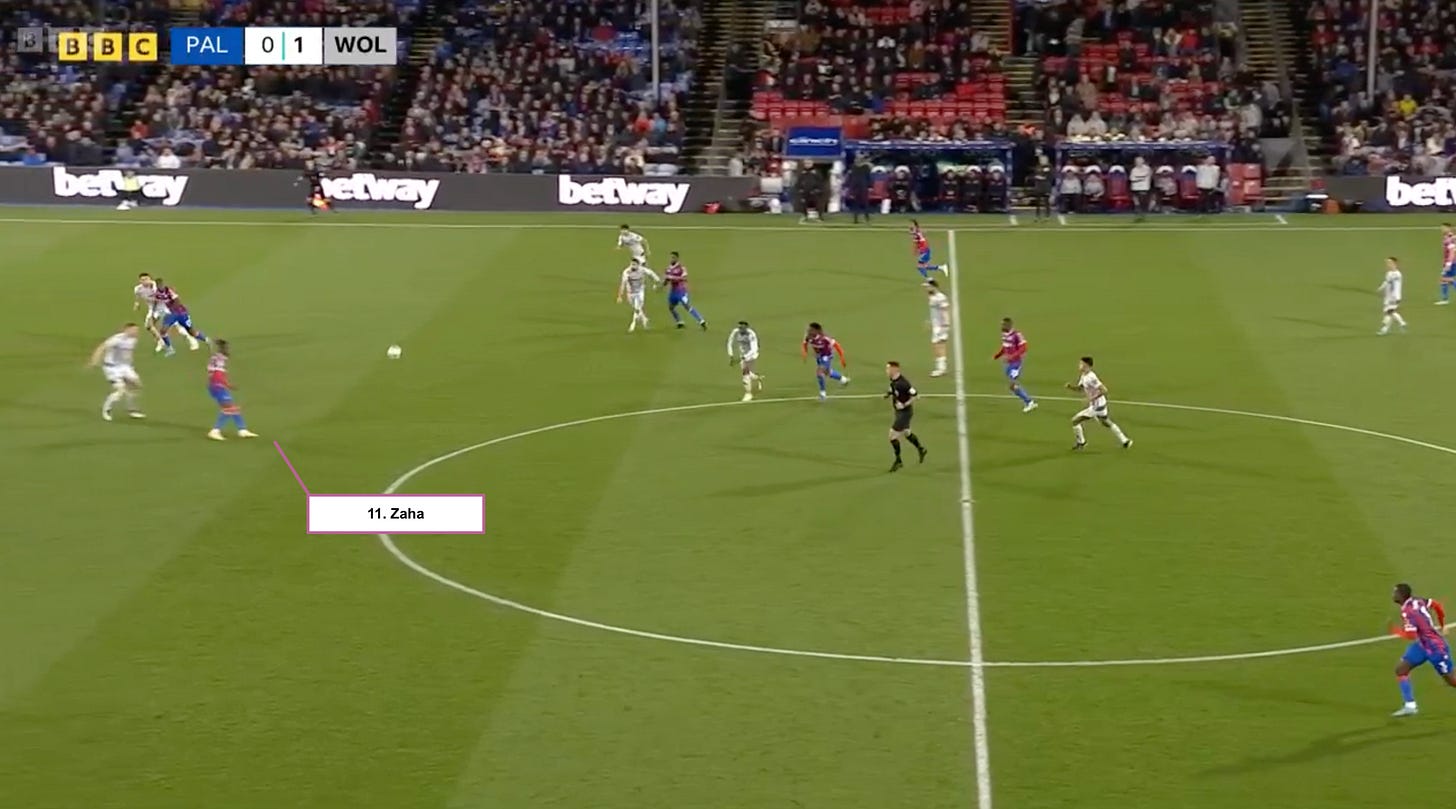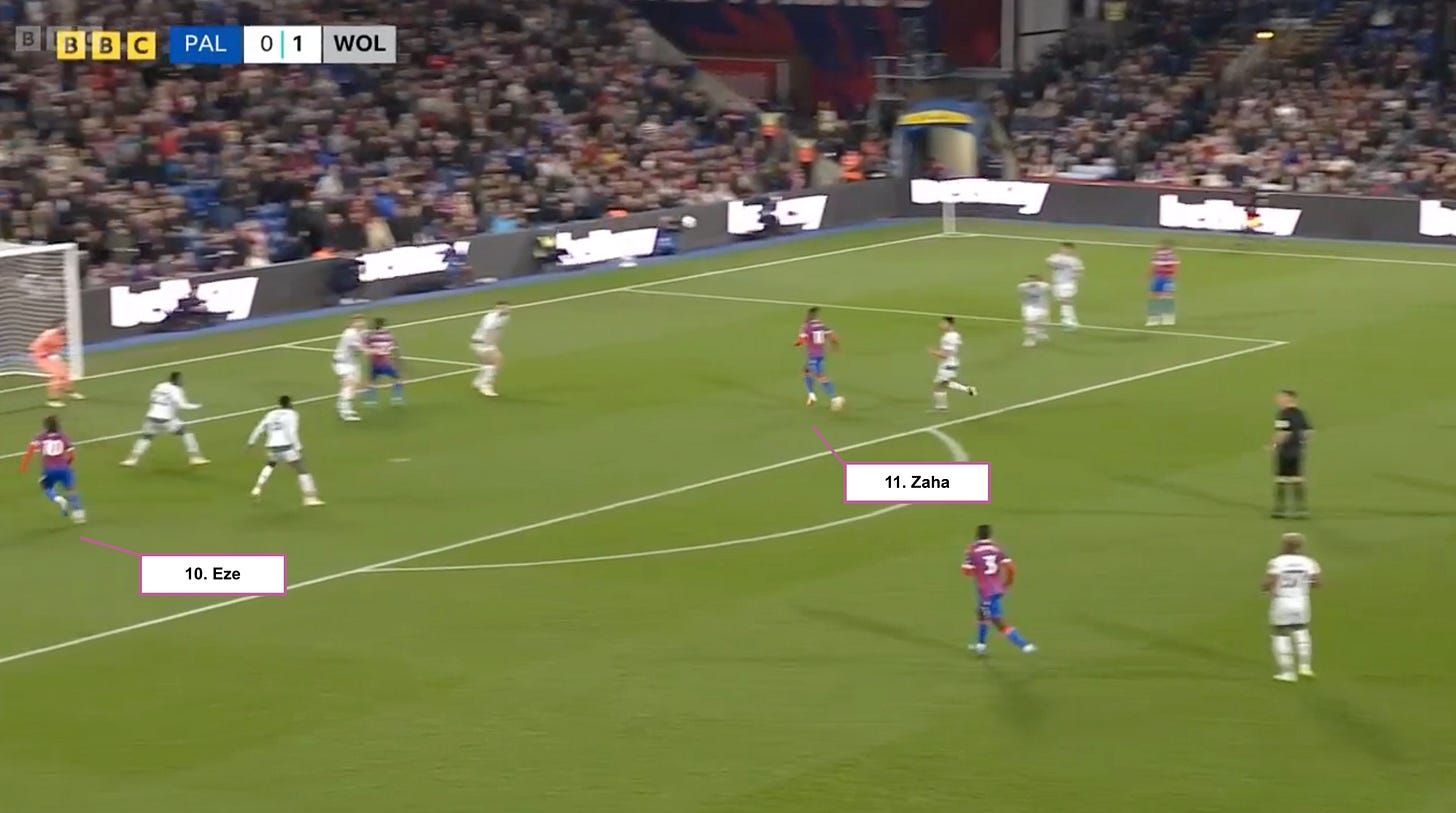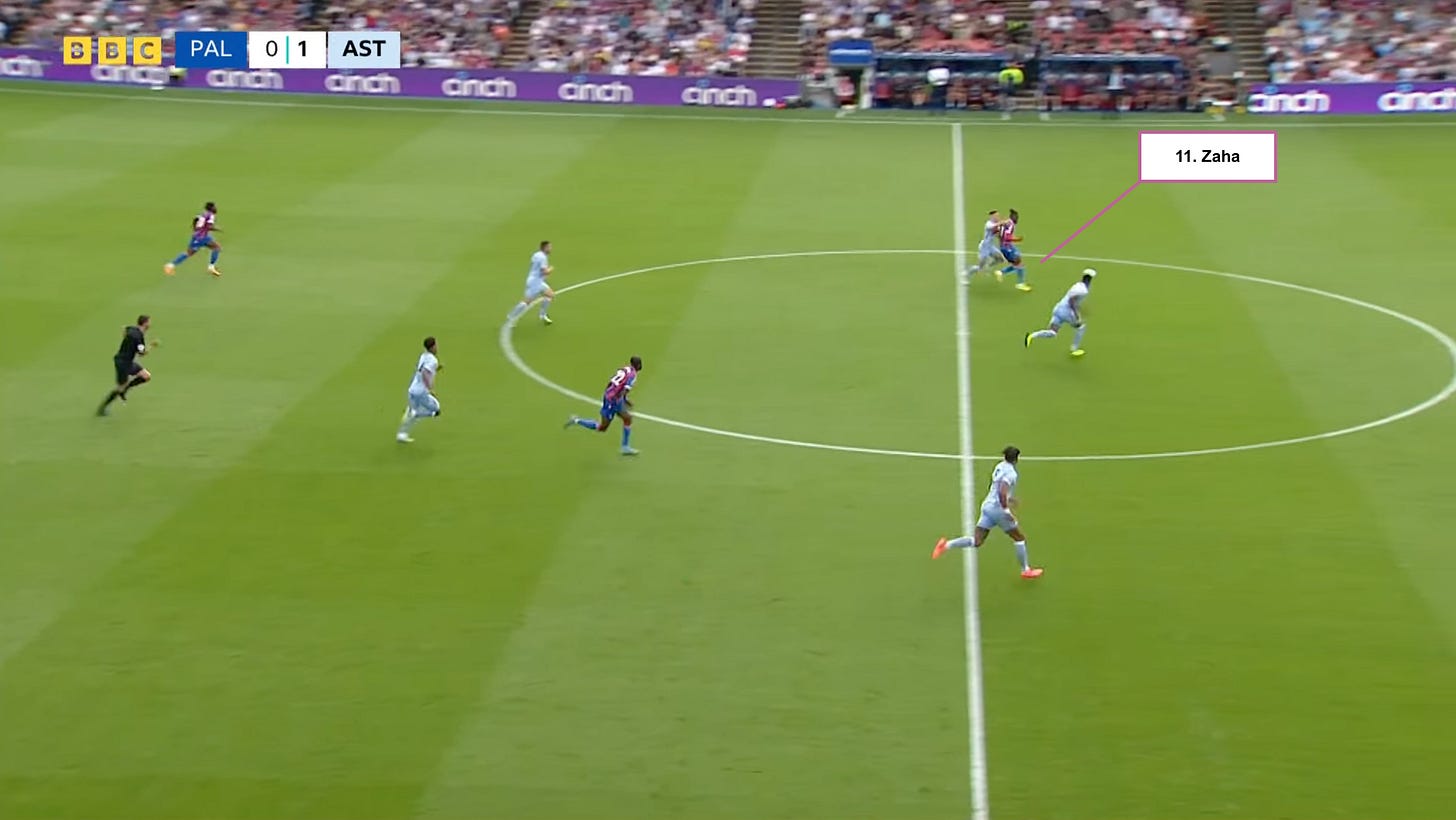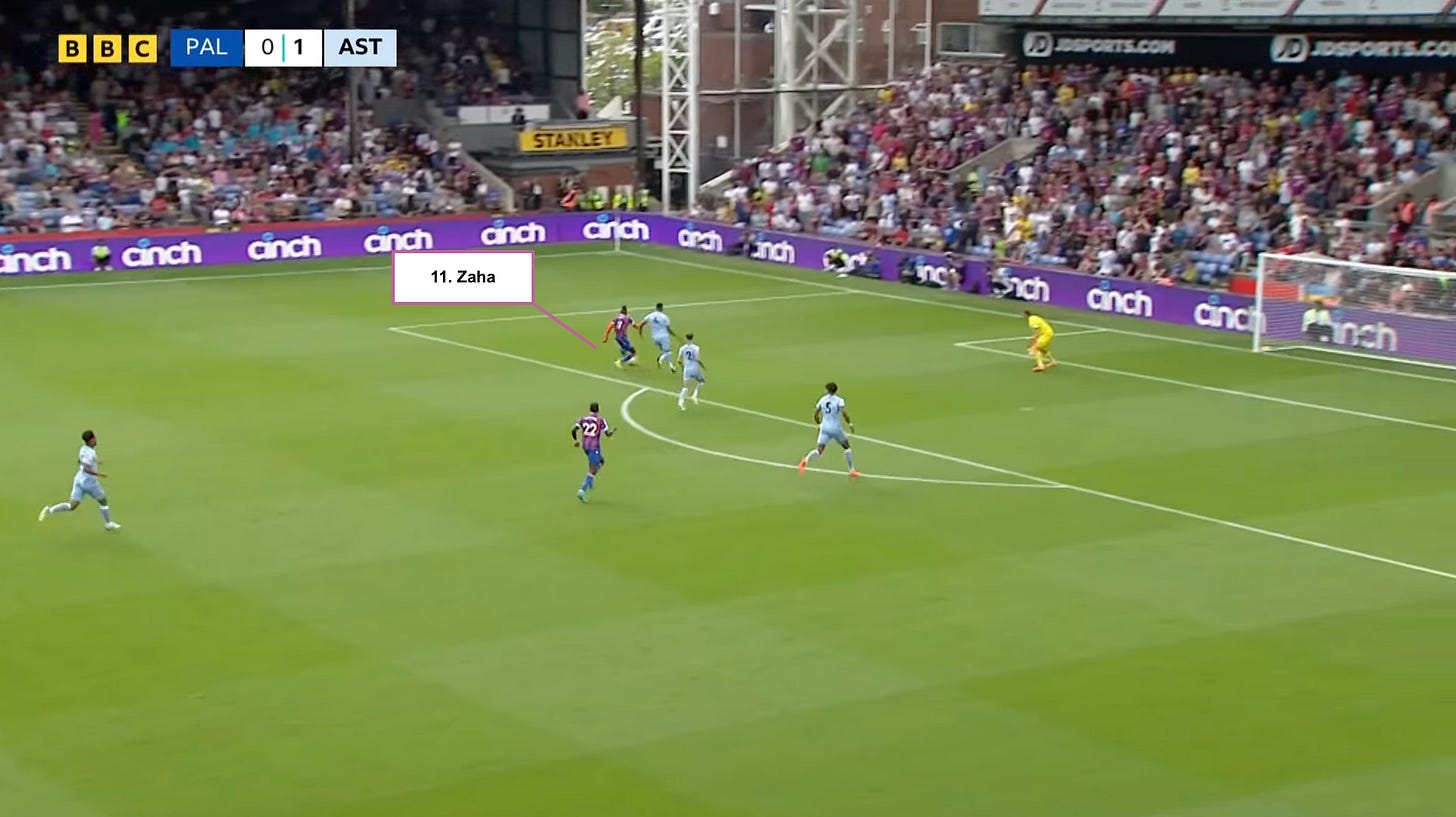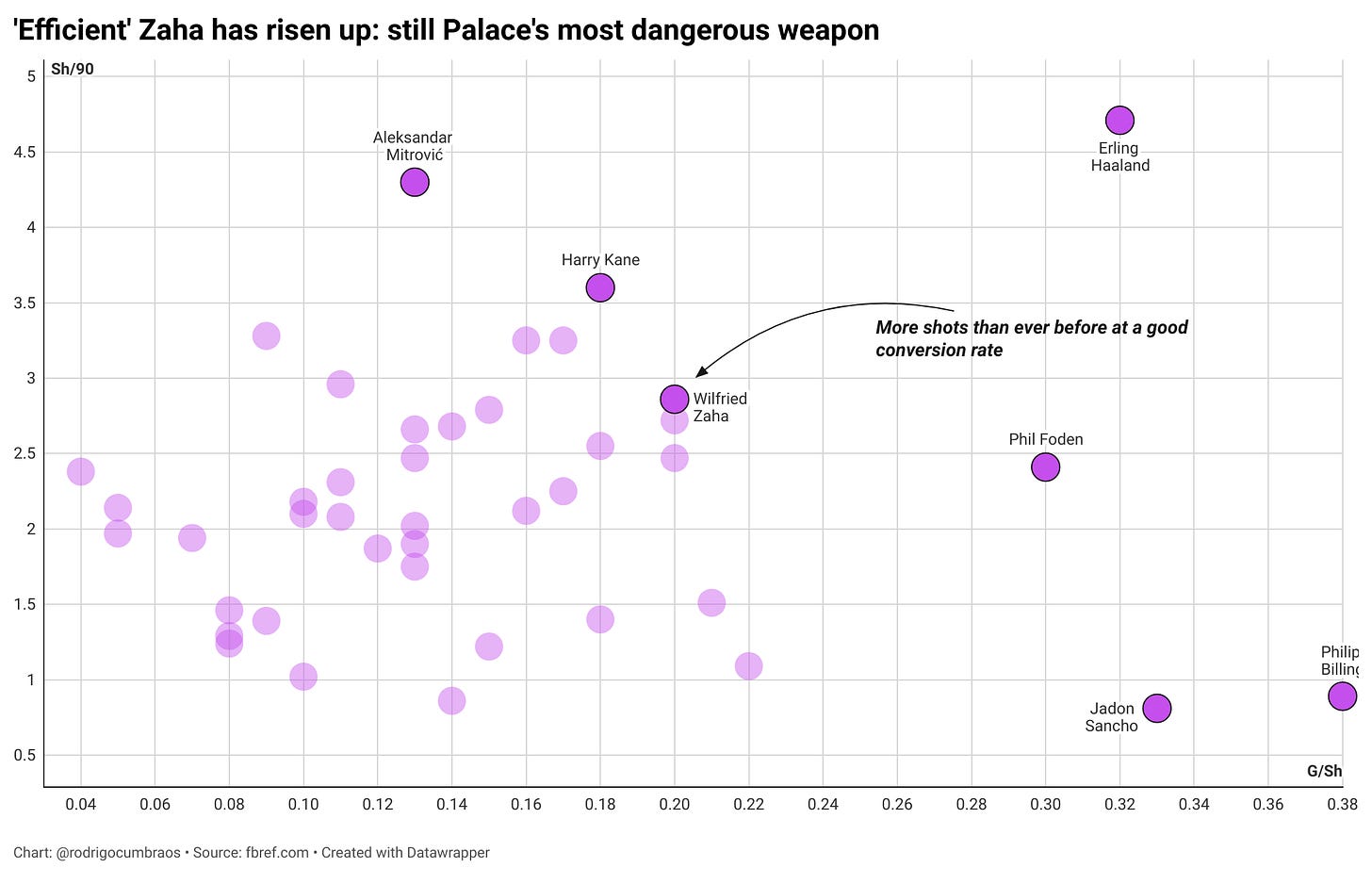'Efficient' Zaha is having his best ever Premier League season - here's why
He’s hugging the touchline, his head’s up while receiving and is ready to take on the opposition. He’s wearing his Nike Mercurials while doing stepovers here and there. In no other way we can imagine Wilfried Zaha. That’s his signature move, his own feature. Or at least, it was until now.
The Zaha we had known, the always-ready-to-take-on-the-opposition winger, is in danger of extinction. On the other side, a more clinical, inside winger with an improved eye for goal contributions has been born. Not as spectacular, but efficient as ever.
“Me, personally, I’ve shifted from being just a dribbler to focus on becoming a goalscorer. Right now, I only dribble when is necessary. As soon as we get on the pitch, efficiency is all we need, nothing else really matters.”
He’s been always Palace’s main attacking threat. Indispensable, irreplaceable. With Roy Hodgson and his defensive approach, Zaha was tasked with being their main spark of creativity. He coped well in that role, but at times it felt too much for a solitaire man because of the fact of him being made into a fouling-magnet, day in, day out. Since his Premier League debut, no one has been fouled more times than Zaha.
Albeit known for enjoying being the pantomime villain, the way in which opponents have seemed to have been able to get under his skin and psych him out of games with excessive regularly has resulted in losses of points for his team and have created a narrative around Zaha as a nasty, ill-mannered player.
For better or worse, that is something that won’t go away because it is inherent in the #7’s game. But Vieira’s take over has helped alleviate some of the problems lone ranger Zaha was facing. The change in the style of play from Hodgson’s first-defend-then-counterattack to Vieira’s ball-minded approach has been decisive. Finally, Zaha can count on young, creative players surrounding him who can take the play-making responsibilities off of his shoulders, allowing him to focus on his most criticized part of the game: goal production.
Vieira’s approach
A year and a half inside Vieira’s reign, so far, we’ve seen important changes in the way his team approaches games, compared to how Palace under Hodgson usually tended to do so.
This Palace side is built around his two ball-playing centre-backs, Andersen and Guehi, who’s qualities in build-up allow the team not only to play it safer, without risking possession (average percent of completed passes per game is up from 74’5% in Hodgson’s final season to 79’3% in this 22/23 season), but also allow them to create a triangle with deep-lying midfielder Cheick Doucouré.
In terms of passes per game, Palace have gone from 306 to 357’7 in the space of two seasons and also in terms of touches per game they’re on the way up (517’1 compared to 567’8). Despite having great counterattacking threat, Vieira wants his team to patiently create out from the back and wait for the spaces to appear. Palace are the 8th slowest team in the league in terms of progressing the ball upfield. They advance 1’38 meters per second which means they are slow and intricate at building in their own half. Something that was never going to happen under Hodgson.
The technical quality of the players in the squad and their fit in the 4-3-3 system means Palace have finally left their speed-dependence style behind. For Zaha, that has been a major boost.
The rise of Wilfried Zaha the striker
“This is why I’m OK playing that role now. I’m not really the main No 9 with my back to goal, but as a second striker that No 9 will set it off to me, I can come deeper and play. It’s totally different to a winger, but I don’t have my back to goal there either so it’s much easier for me.”
In this 4-3-3 set up, where Eberechi Ese and Michael Elise, the two #8, constantly push forward and wide, unsurprisingly as both started their playing careers as wingers and were also signed by Palace to play in that role, Zaha’s been given freedom to roam everywhere as he knows others can drift wide and occupy the space he’s consequently leaving open.
In this clip we see how Eze’s inside-out movement helps Zaha find space inside. First, his movement forces Moutinho to follow him as he drifts wide, creating room in front of the defensive line. Second, it gives Zaha more options to decide. Now he can pass out wide to Eze, who’s doing Zaha’s job as a touchline winger, or he can carry into the central space Eze has just freed.
What happens next is related to Zaha’s words about becoming more efficient. Instead of waiting for a rebound to fall at his feet, he enters the area looking for a cross and changes the direction of his movement to confuse Semedo (he goes from back to front). Actually, he didn’t take the shot but managed to find himself in a very strong position to score.
We are seeing a lot of inside movements from the Ivorian. Up there, he receives, turns and passes to Olise, who’s out wide. Then, Olise gets a cross in and Zaha’s movement to attack the right side of the area allows Eze to enter the opposite side with freedom and completely unmarked. This leads to a goal.
With this kind of movement, Zaha often finds himself in the hot zone, i.e., the central space inside the 18-yard box. Now, as he says, is all about final product and efficiency. And he has certainly added that to his curriculum vitae.
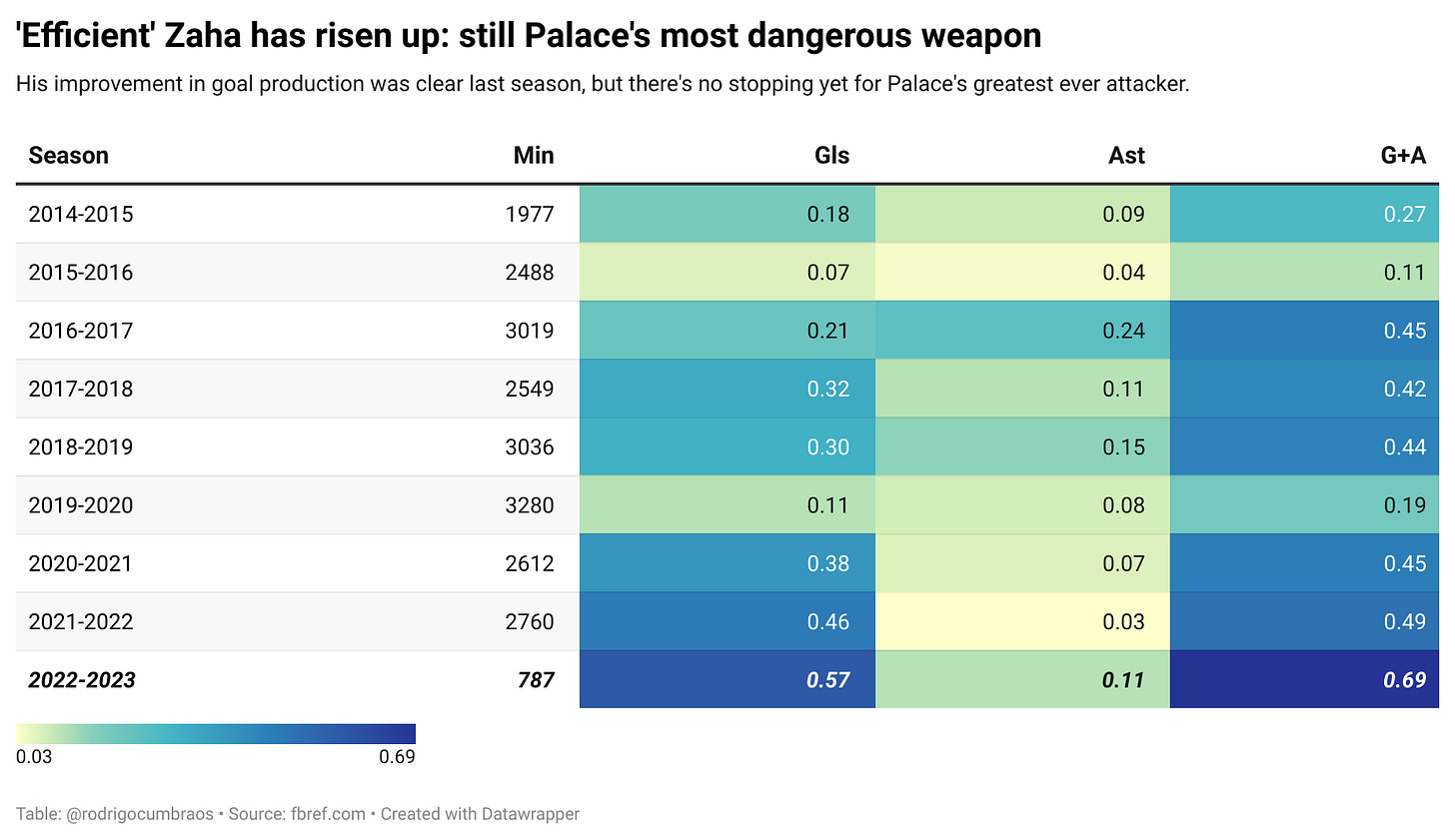
Efficiency is not only related to what you can do in the last phase (shooting) but also to the entire movement, which starts with being in the right place at the right moment. And that’s where Zaha’s major improvement has come from. He has learnt how and when to move, when to stay wide to stretch the opposition defense, when to break with pace to sink the defense and create space for the midfielders…
If he would have been wide open here, he couldn’t have been able to reach the loose ball. However, having an inside left position allows Zaha to attack the interval between right-back and centre-back as the ball slips between them. That’s a big difference. Then he adds the quality (vision, to see the goalkeeper advanced, and technique to find the bottom left corner with his finish).
Another example below: Olise coming from the right and Zaha again attacking the space between both defenders, then he manages to get a shot away in a high-quality position.
To sum up, Zaha has been less influential in Palace’s overall approach but also as decisive as ever before. If we compare this season numbers to each Premier league season he has been heavily involved in, he’s just doing the minimum in terms of passes completed, touches, dribbles completed, and key passes made per match. In every aspect mentioned, he’s having his fourth-best season in the Premier League.
However, he’s way above this season in terms of shooting and goal-production. His 2’87 shots per game is his best record ever in the Premier League. 44% of his shots are on target and two out of ten are goals. 0’57 goals per ninety put Zaha’s 22-23 season as his best in terms of goals scored.
With Zaha yet to put pen-to-paper and time running out headed to his current 30th of June 2023 expiration date, many big teams will be again interested in signing the less-entertaining, more-decisive Ivorian on a free. Some time ago, losing Zaha would have been a big problem for Palace. Now, it could get even bigger and problematic losing a big six team quality player, who has made his name as Palace greatest ever player and has been Vieira’s most influential asset in his rebuild.
All the data used in this article came from: fbref.com, theanalyst.com and Understat. Thanks to our friend Ander Iturralde, director of the famous podcast Alineación Indebida, for helping me to write this text. My first in English.



